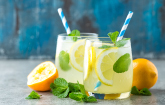NEW YORK, June 5, 2024 /PRNewswire/ -- The global beverage can market size is estimated to grow by USD 5.24 billion from 2024-2028, according to Technavio. The market is estimated to grow at a CAGR of over 2.79% during the forecast period.
For comprehensive forecast and historic data on regions, market segments, customer landscape, and companies- Click for the snapshot of this report
Forecast period |
2024-2028 |
Base Year |
2023 |
Historic Data |
2018 - 2022 |
Segment Covered |
Application (Non alcoholic beverages and Alcoholic beverages), Material (Aluminium and Steel), and Geography (APAC, North America, Europe, Middle East and Africa, and South America) |
Region Covered |
APAC, North America, Europe, Middle East and Africa, and South America |
Key companies profiled |
Amcor Plc, Ardagh Group SA, Ball Corp., BangkokCan Manufacturing Co. Ltd., Can One Berhad, CANPACK SA, CPMC Holdings Ltd., Crown Holdings Inc., Envases Ohringen GmbH, GZ Industries Ltd., Kian Joo Can Factory Bhd, Mahmood Saeed Co. Ltd., Mitsubishi Materials Corp., Nampak Ltd., ORG Technology Co. Ltd., Orora Ltd., Shengxing Group, Silgan Holdings Inc., Toyo Seikan Group Holdings Ltd., and Trivium Packaging B.V |
Key Market Trends Fueling Growth
The RTD coffee and tea market has experienced significant growth due to increasing health consciousness and rising disposable incomes. Millennials, in particular, are driving demand for these instant energy drinks. Metal cans are a popular packaging choice for RTD coffee and tea brands like Starbucks and Stumptown Coffee Roasters. This trend is anticipated to boost the global beverage can market during the forecast period.
The beverage can market is experiencing significant growth, with coffee, energy drinks, and bottled water leading the trend. Consumers prefer convenient and portable packaging, making cans an ideal choice. Coffee and energy drinks continue to gain popularity due to their on-the-go convenience. Bottled water is another major player in the market, driven by health-conscious consumers.
The organic and natural category is also growing, with many brands offering plant-based and zero-sugar options. Producers are focusing on sustainability, with some using recycled materials for their cans. The market is expected to grow further, driven by these trends and consumer preferences.
Market Challenges
- The beverage can market may face challenges due to the anticipated increase in steel prices. China's decision to reduce steel production will likely result in a supply shortage, leading to higher costs for can manufacturers. This could potentially lead to price increases for consumers, causing them to reconsider their purchasing decisions.
- The global steel market has been distorted by China's low-cost production for over a decade, but decreasing production and slowing economic growth in China are expected to shift the balance towards demand, driving up prices.
- The beverage can market faces several challenges. Environmental concerns, such as disposal and recycling, are a significant issue. The use of aluminum cans contributes to a high recycling rate, but the industry must continue to innovate and find more sustainable solutions. Another challenge is competition from other packaging formats, like plastic bottles and glass bottles. Pricing pressure from retailers and consumers also poses a threat.
- Additionally, the market is becoming increasingly globalized, requiring companies to adapt to different regulations and consumer preferences. Lastly, the rise of e-commerce and direct-to-consumer sales is disrupting traditional distribution channels. Companies must navigate these challenges to remain competitive in the beverage can market.
Research report provides comprehensive data on impact of trend, driver and challenges - Download a Sample Report
Segment Overview
- Application
- 1.1 Non alcoholic beverages
- 1.2 Alcoholic beverages
- Material
- 2.1 Aluminium
- 2.2 Steel
- Geography
- 3.1 APAC
- 3.2 North America
- 3.3 Europe
- 3.4 Middle East and Africa
- 3.5 South America
1.1 Non alcoholic beverages- The beverage can market is experiencing growth due to the rising preference for canned drinks in the UK and increasing global temperatures. Health concerns over artificially sweetened beverages are a challenge, but companies are responding with low-sugar options. Promotional activities by leading manufacturers like Coca-Cola and PepsiCo are driving demand.
The market is seeing growth in caffeine-based drinks, particularly energy and sports drinks, and rehydration beverages. Juice manufacturers are increasing, but their impact on the industry is limited due to metal packaging's limited penetration. Overall, the expanding non-alcoholic beverage market is fueling the growth of the beverage can market.
For more information on market segmentation with geographical analysis including forecast (2024-2028) and historic data (2018 - 2022) - Download a Sample Report
Research Analysis
The beverage can market encompasses various types of beverages, including carbonated soft drinks, beer, and cider. Traditional packaging solutions for these beverages have relied heavily on plastic products, such as PET and polyester, which contribute to the production of greenhouse gases (GHGs) during manufacturing and transportation. However, there is a growing trend towards alternative packaging solutions, such as metal cans made of aluminum or steel.
These materials offer advantages in terms of sterilization, labeling, and design innovations. The use of metal cans also reduces the carbon footprint associated with refrigeration and transportation compared to glass bottles or plastic bottles. Moreover, the recyclability of metal cans is higher than that of plastic bottles, making them a more sustainable choice for retail operations.
The beverage can market is a significant sector in the global packaging industry, focusing on producing and supplying aluminum and steel cans for various beverages. These containers offer advantages such as lightweight, recyclable, and convenient for consumers. The market is driven by factors like increasing consumer preference for on-the-go beverages, growing demand for eco-friendly packaging, and technological advancements in can manufacturing.
The market also faces challenges like price volatility of raw materials and intense competition from other packaging formats. The future of the beverage can market looks promising with the ongoing trend of sustainability and innovation in can design and functionality.
Table of Contents:
1 Executive Summary
2 Market Landscape
3 Market Sizing
4 Historic Market Size
5 Five Forces Analysis
6 Market Segmentation
- Application
- Non Alcoholic Beverages
- Alcoholic Beverages
- Material
- Aluminium
- Steel
- Geography
- APAC
- North America
- Europe
- Middle East And Africa
- South America
7 Customer Landscape
8 Geographic Landscape
9 Drivers, Challenges, and Trends
10 Company Landscape
11 Company Analysis
12 Appendix
About Technavio
Technavio is a leading global technology research and advisory company. Their research and analysis focuses on emerging market trends and provides actionable insights to help businesses identify market opportunities and develop effective strategies to optimize their market positions.
With over 500 specialized analysts, Technavio's report library consists of more than 17,000 reports and counting, covering 800 technologies, spanning across 50 countries. Their client base consists of enterprises of all sizes, including more than 100 Fortune 500 companies. This growing client base relies on Technavio's comprehensive coverage, extensive research, and actionable market insights to identify opportunities in existing and potential markets and assess their competitive positions within changing market scenarios.
Contacts
Technavio Research
Jesse Maida
Media & Marketing Executive
US: +1 844 364 1100
UK: +44 203 893 3200
Email: [email protected]
Website: www.technavio.com/
SOURCE Technavio

WANT YOUR COMPANY'S NEWS FEATURED ON PRNEWSWIRE.COM?
Newsrooms &
Influencers
Digital Media
Outlets
Journalists
Opted In




Share this article